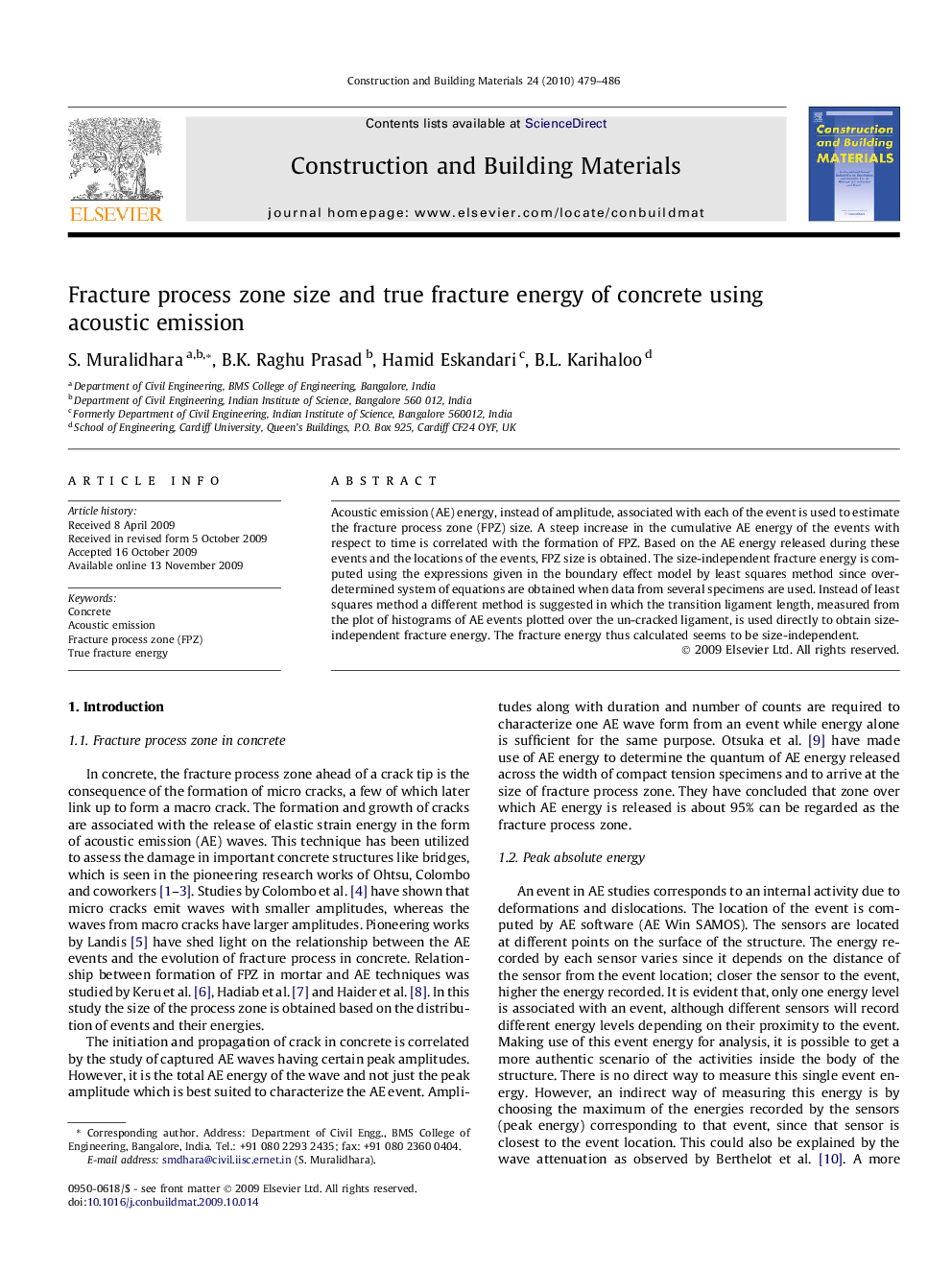| Article ID | Journal | Published Year | Pages | File Type |
|---|---|---|---|---|
| 260490 | Construction and Building Materials | 2010 | 8 Pages |
Acoustic emission (AE) energy, instead of amplitude, associated with each of the event is used to estimate the fracture process zone (FPZ) size. A steep increase in the cumulative AE energy of the events with respect to time is correlated with the formation of FPZ. Based on the AE energy released during these events and the locations of the events, FPZ size is obtained. The size-independent fracture energy is computed using the expressions given in the boundary effect model by least squares method since over-determined system of equations are obtained when data from several specimens are used. Instead of least squares method a different method is suggested in which the transition ligament length, measured from the plot of histograms of AE events plotted over the un-cracked ligament, is used directly to obtain size-independent fracture energy. The fracture energy thus calculated seems to be size-independent.
